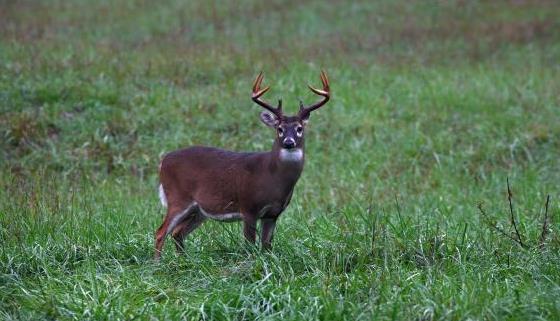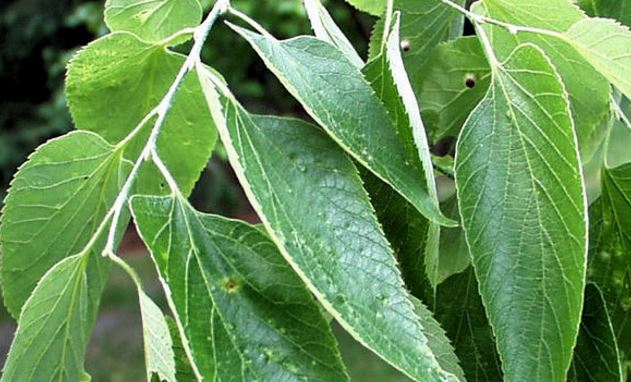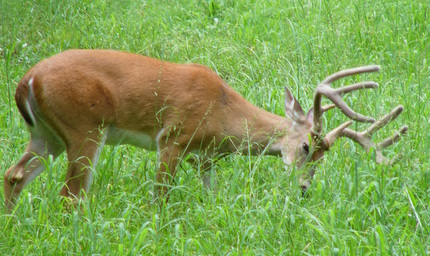Ever wondered about the food preferences of the deer on your property? It’s something you should know if interested in managing for good deer habitat and a healthy whitetail herd. White-tailed deer actually eat a wide diversity of plants, with seasonal use varying with the availability and palatability of the plants found in their habitat.
Whitetail seek out the best foods at all times. That is, they want high quality foods as less time spent foraging means using less energy. Deer diet varies by location because of the environmental and plant diversity found across the whitetail’s range.
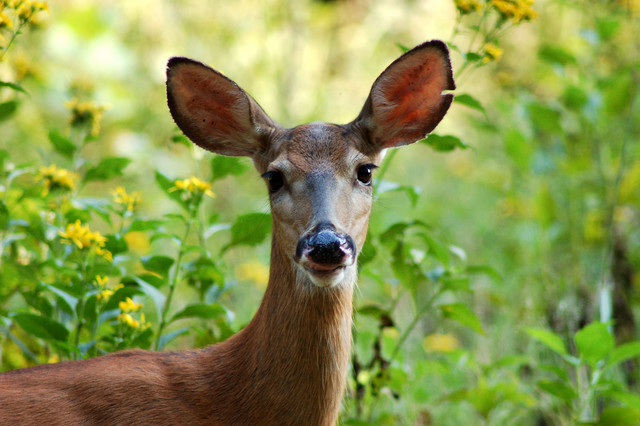
Food Preferences by Forage Class
Seasonal food preferences of white-tailed deer in have been developed based on identification of stomach contents in deer harvested during all seasons of the year. In whitetail food studies, plant preference are typically determined by comparing availability of the forage in the habitat versus the percent it comprised of deer stomach contents.
This allows researchers to determine the deer’s preference for particular foods, as well as their relative value. The importance value of a particular species quantifies the volume of a particular plant species in the deer diet. Native plants that had a high importance value made up a higher percentage of the seasonal or annual diet.
Deer Food Habits by Plant Category
For those that are not familiar with white-tailed deer, a knowledge of deer use of food items by general forage class is as important as knowing the specific plants species eaten by deer. The forage classes identified during the study were defined as:
Browse: This classification refers to the growing soft portion (stems and leaves) of perennial woody plants, trees, shrubs, vines and plants typically referred to as “brush” fall into this category.
Forbs: These are plants that are often called “weeds” by farmers, ranchers, landowners, and those that love well-maintained urban lawns. These plants are herbaceous (non-woody, normally broad-leafed, flowering plants. Forbs include all flowering herbaceous plants that are not grasses.
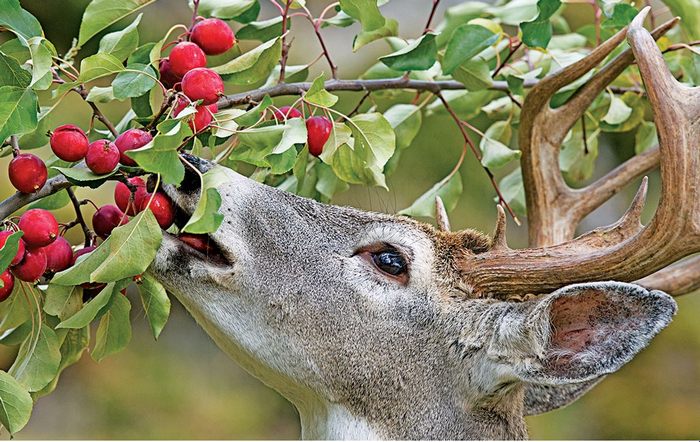
Mast: Refers to the fruit of the plants defined as browse species. Mas includes things such as oak acorns, mesquite beans, prickly pear fruits, berries, and similar items. As a group, mast is seasonally important in deer diets and can vary greatly from year to year.
Grasses: This includes grass and herbaceous grass-like plants such as sedges and rushes.
Grain Crops: This food class includes forage items that are planted for farming, grazing, or specifically for wildlife in the form of food plots. Cool season crops typically include clover, vetch, wheat, oats, and ryegrass. Common warm season crops include peas and other legume varieties, mile, and millet.
Commercial Feeds: This includes sacked feeds such as true supplements or those simply considered deer hunting attractant. The most common sacked supplement is a deer pellet that is at least 16% protein and is distributed through free-choice feeders. The most common deer hunting attractant is whole corn distributed with timed deer feeders prior and during the white-tailed deer hunting season.
Deer Diet: A Texas Example
Data collected in west-central Texas from over 230 deer in 6 counties indicated the average annual diet of white-tailed deer consisted of 36% browse, 20% forbs, 20% mast, 12 grasses, 7% planted agricultural grain crops, and 5% commercial feed.
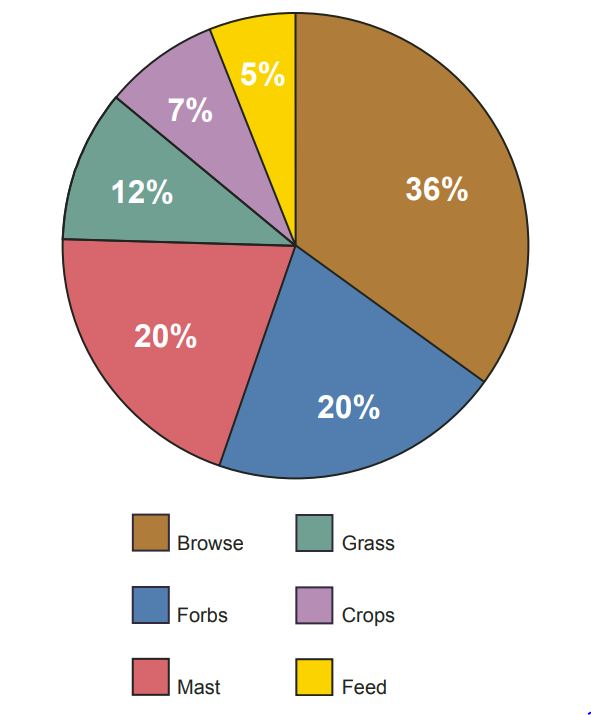
Are the results form Texas similar to the food preferences of deer in your area? Although the specific plant species consumed by deer in your area will no doubt be different, deer preference by plant category will likely be very similar across the whitetail’s range, with the exception being the consumption of additional crops in areas dominated by row crops.
Browse and forbs are the key plants required by white-tailed deer. They also use mast and agricultural crops when available. Deer are very selective foragers and shift their focus to the best plants available to them as the seasons change.
